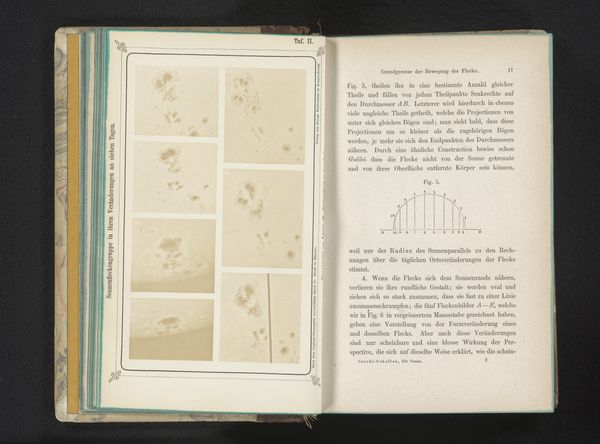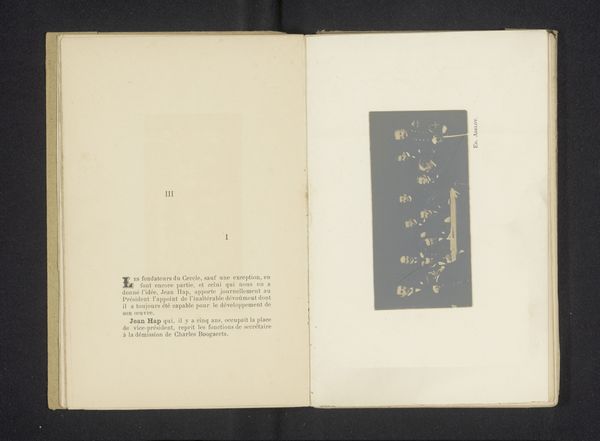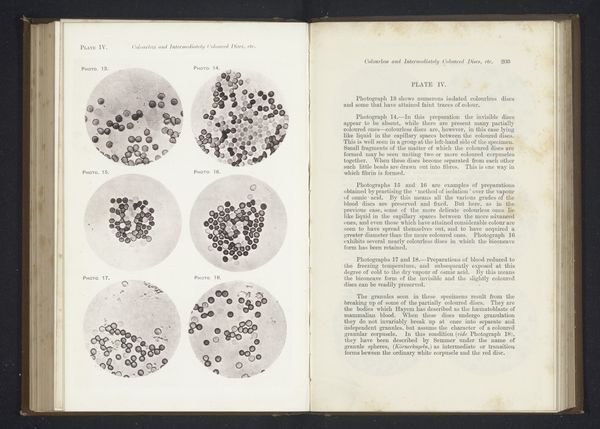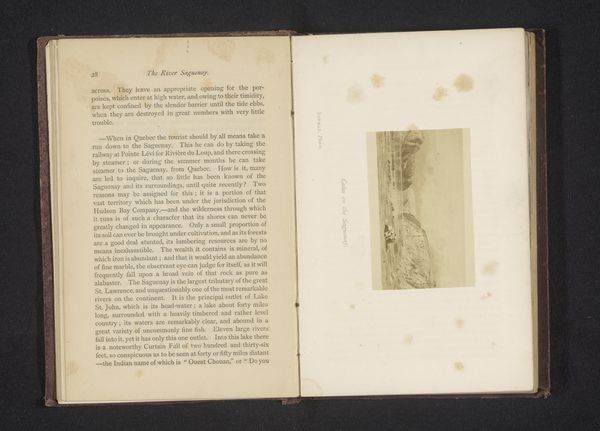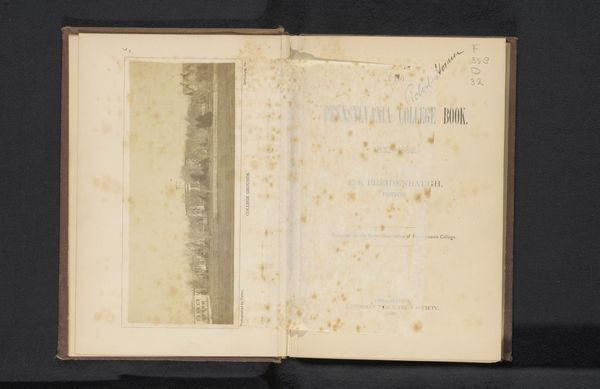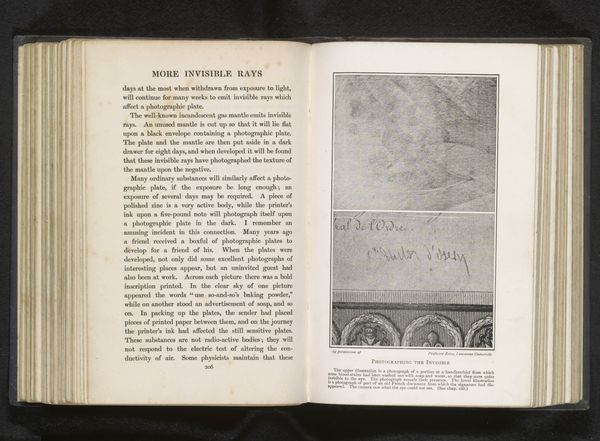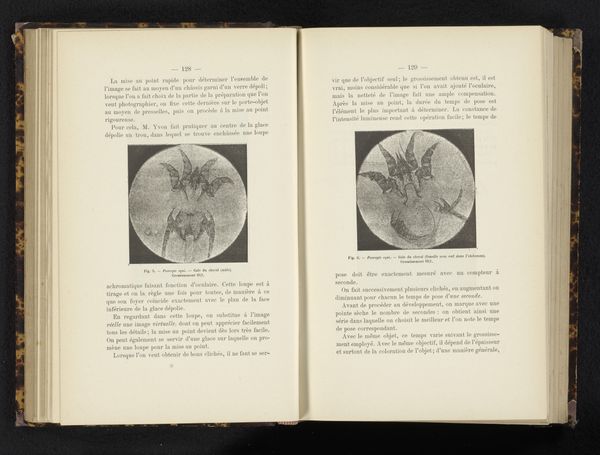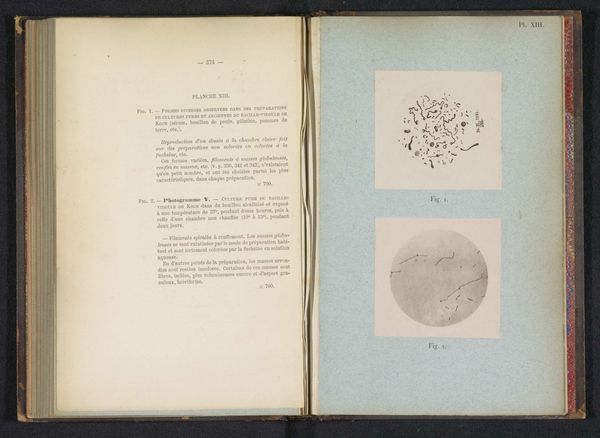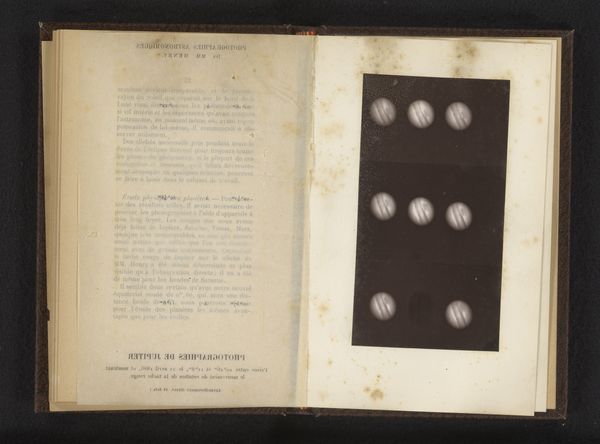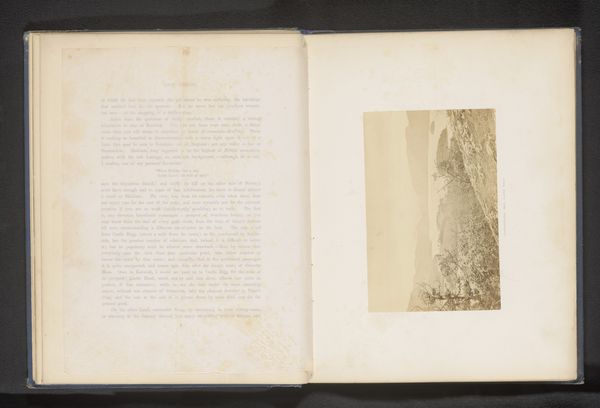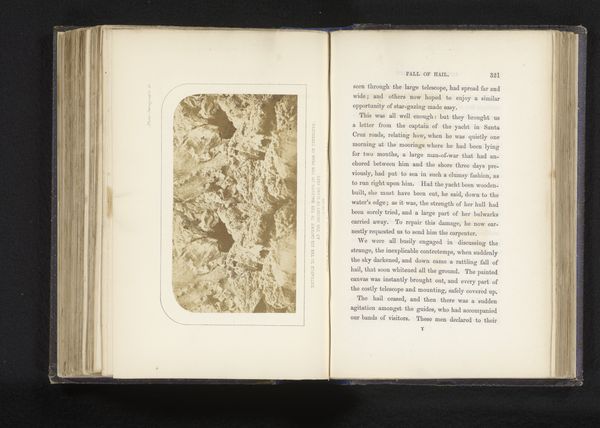
Verandering van een cluster zonnevlekken gedurende zeven dagen Possibly 1870 - 1879
0:00
0:00
print, etching, photography, albumen-print
# print
#
etching
#
photography
#
geometric
#
albumen-print
Dimensions: height 140 mm, width 227 mm
Copyright: Rijks Museum: Open Domain
Curator: Looking at this open book, we find "Verandering van een cluster zonnevlekken gedurende zeven dagen," or "Change of a cluster of sunspots during seven days," possibly created between 1870 and 1879 by Lewis M. Rutherford. It seems to be an albumen print with etching, featuring photographic captures of sunspots. What strikes you first about it? Editor: The meticulous detail and the stark contrast grab my attention. It feels like a scientific record but also a compelling visual document. How did they even capture something like this back then? Curator: Rutherford was a pioneer in astronomical photography. This piece showcases his process; he combined photographic plates and etching, allowing for precise reproductions of these celestial phenomena. Think of the labour involved – creating a visual record through complex technical means. Editor: Exactly! And it places this within a fascinating historical and institutional context. The inclusion in a book speaks volumes about how scientific knowledge was disseminated and validated. Who was the intended audience, and what societal role did these images play? Curator: It’s a moment of technological and social intersection. These images were part of a larger effort to document and understand the universe. But let's think about how accessible such information was; who had access to these albums, these images? It shifts from solely scientific pursuit to broader social and even class dimensions. Editor: Absolutely, considering photography’s growing role at the time, this bridges high science with the increasingly democratized technology of image-making. It blurs the line between purely functional recording and public consumption. Were these circulated more within academic circles, or did they enter a more public realm? Curator: I imagine a more academic realm at first, then moving gradually outwards. Regardless, even their limited circulation reflects growing interest in science. It reveals the material production and means behind astronomical studies and its wider impacts. Editor: It also points to photography's pivotal role in shaping how people perceived the world beyond our immediate surroundings. These once hidden details were becoming viewable through print. A very small window to glimpse a broader historical narrative indeed.
Comments
No comments
Be the first to comment and join the conversation on the ultimate creative platform.

